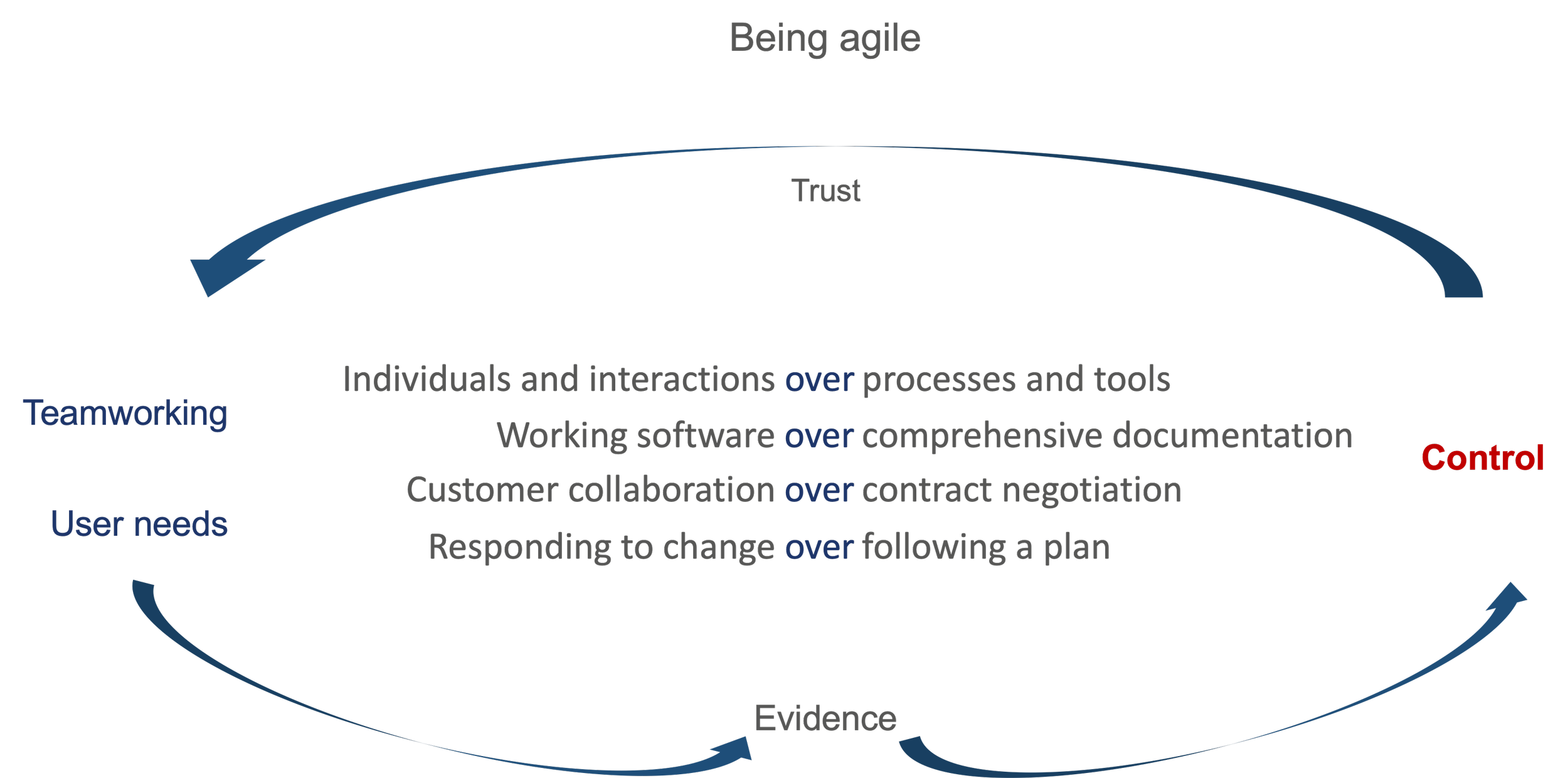The agile mindset
Delivering a webinar for civil servants across government to raise awareness of the role of the Central Digital and Data Office (CCDO).
Late last year, a webinar with the title of “Embracing the agile mindset” was organised for civil servants across government. After the planned speaker had to pull out, I was asked to step in to deliver the webinar. All I had was a title. With just over a week to prepare, I started thinking about what an agile mindset really means to me, and why I would encourage others to embrace it.
An agile mindset is about not having to think about doing something in a specific way for it to be agile, it’s just the way you do things. Agile becomes second nature and any other approach seems to make less sense.
My big caveat here is that having an agile mindset is not a mindset for how you should live all of your life. It’s more akin to the mindset you have when you get behind the wheel of a car. You automatically get into a drivers mindset.
So an agile mindset is second nature when it comes to solving complex-adaptive problems that require a team of people to deliver an appropriate solution. Thats when agile works best. Well that’s probably be an acceptable text book description, but it’s actually more than that.
From working alongside other digital delivery professionals, people with different skillsets whose combined capabilities build great digital products and services, I picked up on lots of small things that we were doing, sometimes without realizing it and it just became how we did things. Yes, we were doing all the big things - we were working to scrum, we had the scrum roles, used the scrum artefacts - had a product backlog, and a sprint backlog. We were producing product increments during our time-boxed sprints. We were iterating and continuously improving by reflecting on feedback. But it was often the small things that actually made us feel like we were really being agile.
Product Owners learned to say no. The team learned if they discussed details in a timely manner they didn’t need to write down lots of detail. Everything was a test, so nothing failed, we just acquired more knowledge. The product backlog was really a team backlog, and it just represented all the work that the team needed to do. So work was just work - whether it was building a feature, or mitigating a risk. It was just work for the team to action. All work was managed on both a physical and virtual board - the teams progress was transparent. The entire team regularly worked on problems together, and everyone took part in observing and note taking in user interview sessions. There was a mutual feeling of respect and appreciation for one another and a sense of purpose in what we were doing. In retrospectives it was not uncommon for people to comment on the good work that others in the team were doing.
We had started to develop an agile working culture. The team were behaving in a way that aligned with agile principles, and influencing others to work in a similar way. The team were creating an environment that helped them to be agile and continuously improve their agile ways of working.
An agile mindset is one that creates an environment where agile behaviours can easily be adopted and nurtured, where everyone has the same set of shared values that align with those of the agile manifesto.
I started the webinar providing clarity on the agile manifesto, explaining the underlying intent of creating an agile culture. I broke down the traditional waterfall approach and explained how, by just breaking down work into smaller chunks, we start to iterate and deliver much more value much more quickly.
I provided an overview of how creating and nurturing an agile culture, starts to deliver benefits for users, the team and organisations alike.
Finally I described the four enablers that need to be in place that allow an agile culture to be created and nurtured. They are:
A focus on delivering value to users, by understanding their changing needs aligns the team with a common purpose.
Effective team working with the right capability and capacity is essential to deliver value to users.
Adopting a lean approach in the team not only reduces waste and improves efficiencies, but aids the focus on delivery of value with the team not wasting time on things that are not high value.
Iterating allows products, services and our ways of working to be continuously improved. It enables a lean way of working and it encourages team working. It allows value to be incrementally delivered to users and validates our understanding of their needs.
The webinar was delivered to 367 civil servants on behalf of the Central Digital and Data Office (CDDO), and in a survey of attendees it received a 100% satisfaction rating.
For a copy of the slide deck, please get in touch.







































